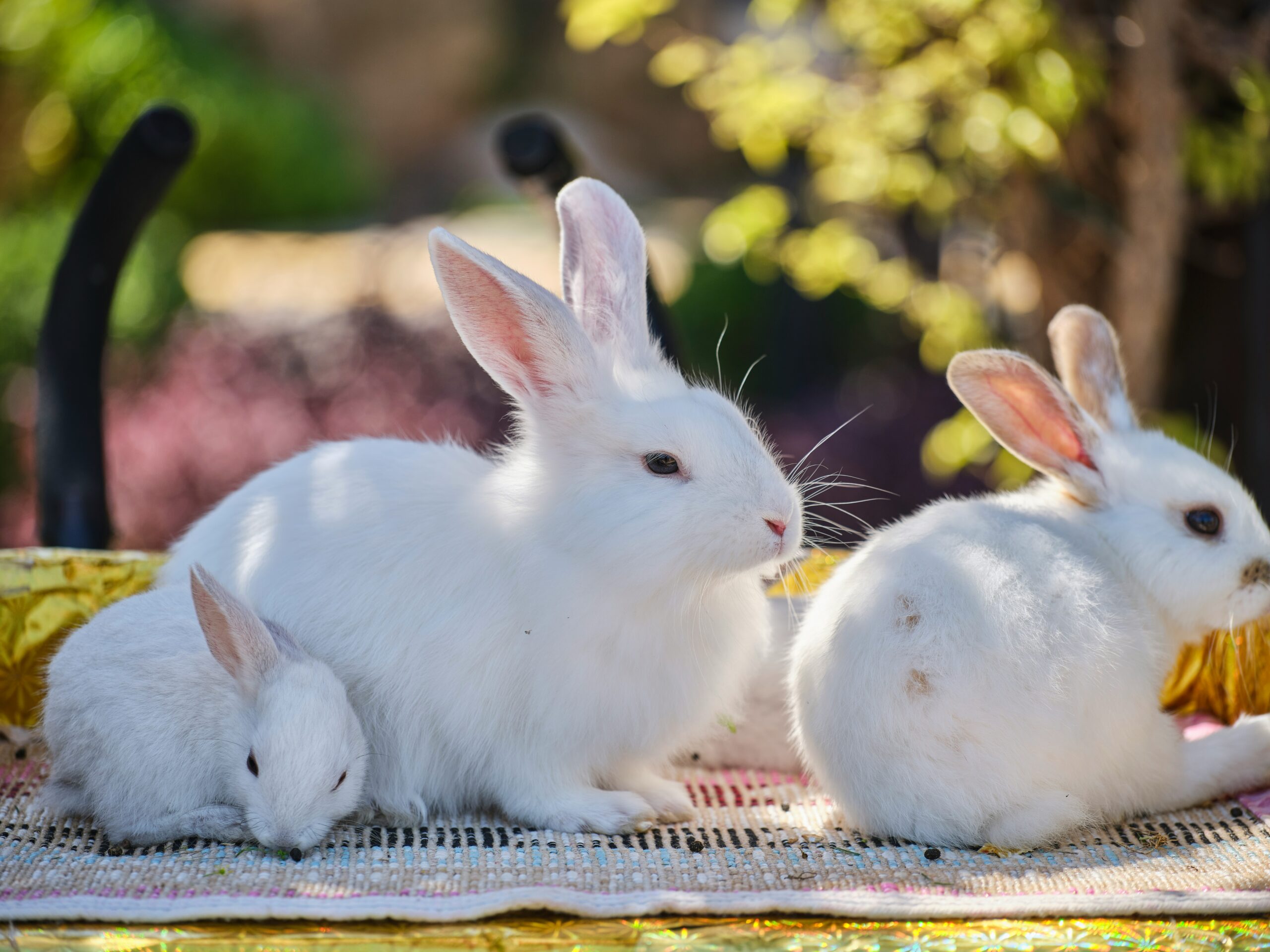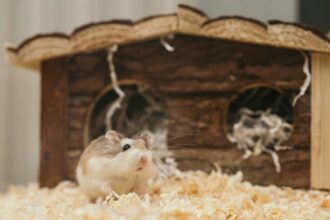Training your small pet can be an incredibly rewarding experience, not just for establishing good habits but also for deepening the bond between you and your furry friend. Positive reinforcement is one of the most effective methods for achieving this. In this comprehensive guide, we’ll discuss practical strategies, ideas, and tips for using positive reinforcement to train your small pets. Along the way, we’ll reference lessons from teaching hamsters to play, guinea pig behavior tips, pet rabbit training guides, and other small pet training techniques. Whether you’re curious about how to train a hamster, looking to address hamster behavior problems, or even exploring teaching rabbits tricks, read on to learn how positive pet reinforcement for hamsters and other species can help your pets thrive.
Why Choose Positive Reinforcement?
Positive reinforcement training centers on rewarding desirable behavior rather than punishing unwanted actions. This gentle approach not only improves small animal obedience but also instills confidence in your pet while strengthening the bond between you. Consider these key benefits:
- Boosts Confidence: When pets know they’ll receive a reward, they are more eager to learn.
- Builds Trust: Using treats, praise, or play as rewards fosters a loving, supportive environment.
- Encourages Repeat Behavior: Every time your pet follows a command—whether it’s training your pet rabbit to come or simply following small pet training techniques—they associate the behavior with a positive outcome.
Positive reinforcement works effectively across a range of small pets. Whether you are addressing hamster biting habits or working on training tips for guinea pigs, this method has proven successful with nearly every species—from hamsters and guinea pigs to rabbits and gerbils.
Understanding Your Pet’s Behavior
Before you can successfully apply positive reinforcement, it’s essential to understand your pet’s unique communication style and natural behaviors. Observing your pet carefully allows you to recognize subtle cues, which can prevent frustration and enhance training efficiency.
Decoding Communication
- Hamsters: You might often encounter questions about how to train a hamster or handle hamster behavior problems, such as biting habits. Hamsters have quick bursts of activity and might nip if they’re startled. Recognizing their signs, like rapid movements or vocalizations, helps you tailor your approach.
- Guinea Pigs: Learning guinea pig behavior tips goes beyond mere observation. Understanding guinea pig sounds and body language can help determine when they are anxious or excited. These insights not only inform Guinea pig training methods but also enrich general small pet behavior troubleshooting.
- Rabbits: When it comes to pet rabbit training guides, take note of subtle signals—ear positioning, body posture, and even small grunts can hint at what your rabbit is experiencing. Knowing how to calm a nervous rabbit begins with decoding these cues.
- Gerbils: Gerbil socialization is about more than simply letting them interact; it involves understanding body language and ensuring each pet feels secure. When addressing behavioral issues in gerbils, look for signs like excessive chirping or aggressive chases.
By observing their natural behavior, you can tailor your rewards to suit each species. This foundational understanding is critical, whether you’re teaching hamsters to play or addressing how to train rabbits to hop through hoops.
Setting Up the Ideal Environment
A well-organized and comfortable environment is key to successful training. A space designed with your pet’s needs in mind not only facilitates learning but also minimizes stress and aggressive outbursts.
Enclosure and Living Space
- Spacious and Organized: An adequately sized cage or enclosure is crucial. For hamsters, guinea pigs, or rabbits alike, ample space for movement helps maintain small animal obedience. Separate areas for feeding, playing, and resting create a structured environment conducive to learning.
- Predictable Layout: A consistent setup—such as a designated spot for rabbit litter training—builds a sense of security. Similarly, following guinea pig training methods that emphasize consistency aids in reducing stress.
- Enrichment Tools: Incorporate toys and interactive objects that provide mental stimulation. Whether it’s tunnels for hamsters, chew toys for rabbits, or exercise wheels for guinea pigs, these tools help channel natural energy and prevent boredom.
Light and Sound Control
- Gentle Lighting: Harsh or flickering lights can unsettle pets. Soft, adjustable lighting creates a calm atmosphere for training.
- Low-Noise Environment: Keep the area quiet and free from sudden sounds. Strategies on how to calm a nervous rabbit also apply here—consistency in sensory inputs can make training sessions more effective.
By creating an environment where your pet feels secure and engaged, you’re laying the groundwork for effective training sessions that incorporate positive reinforcement for small pets.
Positive Reinforcement Techniques
Now that we understand the importance of behavior observation and environmental setup, let’s explore hands-on techniques that make positive reinforcement training successful.
1. Immediate Rewards
Prompt and precise rewards are essential. Every time your pet demonstrates the desired behavior, offer a reward immediately:
- Treats and Snacks: Small, healthy treats work wonders. Whether you’re training a hamster or rewarding a pet rabbit for coming when called, treats help to solidify the connection between behavior and reward.
- Verbal Praise: A gentle “good job” or “well done” can encourage further progress. Using positive pet reinforcement for hamsters, for instance, involves not just treats but also consistent, encouraging language.
- Physical Affection: Light petting or a gentle stroke, adapted to each species’ preference, provides extra motivation. This method is effective across species, from guinea pigs to gerbils.
2. Consistency Across Sessions
Short, frequent training sessions are key for keeping your pet engaged, regardless of whether it’s a hamster, a guinea pig, a rabbit, or a gerbil.
- Frequent, Brief Sessions: Limit training sessions to 5–10 minutes to ensure your pet doesn’t become overwhelmed.
- Consistency in Cues: Use the same words, sounds, or hand gestures every time. For instance, if you’re teaching rabbits tricks or training your pet rabbit to come, consistent cues speed up the learning process.
- Regular Scheduling: Stick to a schedule so your pet learns that training is a routine part of their day. This consistency reinforces small pet training techniques and helps correct any undesirable behavior.
3. Shaping New Behaviors
Positive reinforcement isn’t just about rewarding existing behaviors—it’s also about shaping new ones gradually.
- Step-by-Step Teaching: Break down complex behaviors, such as how to train rabbits to hop through hoops, into smaller, achievable tasks. Start with basic steps and gradually increase difficulty.
- Incremental Rewards: Reward your pet for small advancements. For example, if you’re following hamster training tips, even a small head tilt in the right direction deserves praise.
- Behavioral Progression: Recognize that each species learns at its own pace. Adjust your method as necessary to address behavioral issues in gerbils or correct hamster behavior effectively.
4. Redirecting Unwanted Behavior
When unwanted behavior arises, positive reinforcement can help redirect your pet’s focus without resorting to punishment.
- Redirection Tactics: If your rabbit is chewing on furniture, substitute with safe chew toys. Techniques on how to stop your rabbit from chewing echo the strategies used for correcting hamster behavior.
- Offer Alternatives: When your pet exhibits aggressive behavior, such as hamster biting habits, gently divert their attention by introducing a toy or engaging in play.
- Maintain Calm: Avoid harsh corrections. Instead, calmly guide your pet to the correct behavior and praise them as soon as they follow through. This method is applicable to managing small pet behavior troubleshooting across species.
Training Techniques for Different Small Pets
While the principles of positive reinforcement remain consistent, here are some species-specific pointers that can enhance your training sessions.
Training Your Hamster
Hamsters are known for their quick bursts of energy and sometimes unpredictable behavior.
- How to Train a Hamster: Focus on short, playful sessions, offering treats immediately when the hamster follows a command.
- Hamster Training Tips: Use soft lighting and gentle handling to avoid startling your hamster. Recognize and correct hamster behavior problems through persistent positive reinforcement.
- Hamster Socialization Tips: Even if your hamster shows occasional biting habits, consistent, calm interaction helps build trust.
Guinea Pig Training
Guinea pigs are gentle but can be sensitive to changes in their environment.
- Guinea Pig Behavior Tips: Listen to subtle cues by understanding guinea pig sounds. A relaxed guinea pig often shows soft vocalizations and a calm demeanor.
- Guinea Pig Interaction Tips: Use small treats and gentle petting to build a trusting relationship. Consistent guinea pig training methods make a difference in their overall behavior.
- Training Tips for Guinea Pigs: Like other small pets, guinea pigs benefit from structured sessions that focus on positive reinforcement and small pet training techniques.
Pet Rabbits
Rabbits are affectionate companions that can also be trained with positive reinforcement techniques.
- Pet Rabbit Training Guide: Begin with basic commands such as coming when called. Gradually introduce more complex tasks like rabbit litter training or teaching rabbits tricks.
- How to Calm a Nervous Rabbit: Use a quiet, predictable environment alongside rewards to ease your rabbit’s anxiety.
- Training Your Pet Rabbit to Come: Consistently use the same verbal cues and offer immediate rewards to reinforce the behavior.
Gerbils
Gerbils can be highly social and energetic, making them excellent candidates for positive reinforcement.
- Gerbil Socialization: Creating opportunities for group play helps reduce behavioral issues in gerbils.
- Teaching Gerbils Tricks: Gradually introduce simple commands and reward each small success.
- Behavioral Issues in Gerbils: Address any signs of aggression by carefully observing and adapting your training approach to suit their dynamic nature.
Overcoming Training Challenges
Even with the best strategies, you might encounter obstacles along the way. Here are some troubleshooting tips to help you along your training journey:
Dealing with Setbacks
- Patience Is Key: Understand that not every training session will go perfectly. If your pet struggles, take a break and try again later.
- Adjust Techniques: If a particular cue or reward isn’t working, experiment with different treats or gestures to see what resonates best with your pet.
- Track Progress: Maintain a training log where you note successes and setbacks—this is an effective method for small pet behavior troubleshooting. Reflect on what worked with one session and consider applying similar techniques to correct hamster behavior or address how to train a hamster successfully.
Handling Specific Behavioral Issues
- Hamster Biting Habits: If your hamster is nipping, review your handling methods. Make sure that sessions are calm and that treats are given promptly to reinforce positive responses.
- Gerbil Aggression Issues: For gerbils exhibiting unexpected aggression, consider reducing stimuli and focusing on one-on-one interactions during training. Group training sessions can also help show calmer behavioral patterns through peer influence.
- Rabbits Chewing: To stop your rabbit from chewing on inappropriate items, provide plenty of safe alternatives. Regularly redirect their attention to designated chew toys and reward with treats.
- Guinea Pig Stress: If your guinea pig becomes stressed, simplify the training environment. Use consistent guinea pig training methods and interaction tips to rebuild a sense of safety.
Staying Consistent Across Species
One of the beautiful aspects of positive reinforcement is that many techniques cross species boundaries:
- Small Animal Obedience: Whether you are teaching hamsters, guinea pigs, rabbits, or gerbils, the principles of small pet training techniques remain the same.
- Cross-Pollination of Ideas: For instance, techniques learned from a pet rabbit training guide can be modified to suit guinea pig behavior tips or even adapted as training tips for guinea pigs when necessary.
Integrating Positive Reinforcement Into Daily Life
Training should not be confined to isolated sessions—it can become a natural part of your daily interactions with your small pet.
Routine Reinforcement
- Everyday Moments: Use daily routines as opportunities for reinforcement. A simple “good job” during feeding or play can strengthen positive behavior throughout the day.
- Interactive Play: Incorporate games into routine care. Whether it’s teaching hamsters to play or engaging in light-hearted activities with your pet rabbit, these moments foster trust and learning.
Social and Family Engagement
- Involve the Family: Small pets are often a family affair. Encourage family members to learn positive reinforcement strategies. This not only ensures consistency for your pet but also spreads the joy of training.
- Online Communities: Engage with fellow small pet owners online to exchange tips on positive reinforcement for small pets. Sharing experiences, from guinea pig interaction tips to correcting hamster behavior, can enrich your own training repertoire.
Final Thoughts
Positive reinforcement training is a gentle, effective, and rewarding way to guide your small pet towards better behavior and a happier life. Whether you’re learning how to train a hamster, applying guinea pig behavior tips, using a pet rabbit training guide, or exploring gerbil socialization techniques, the universal language of rewards, consistency, and patience binds these diverse methods together.
Every interaction—be it a brief training session or everyday playful moments—builds on the trust and positive bond you share with your pet. As you implement these strategies, remember that setbacks are part of the learning process. By celebrating small victories and continuously adapting your approach through small pet training techniques, you create a nurturing environment where even common behavioral issues like hamster behavior problems or how to stop your rabbit from chewing become manageable stepping stones to success.
Embrace the journey of training with positivity and empathy. Your commitment to using positive reinforcement for small pets not only transforms behavior but also enriches your life with countless moments of joy, trust, and mutual respect.
Happy training, and may your small pet’s progress—and the smile on your face—grow with every reward earned!






